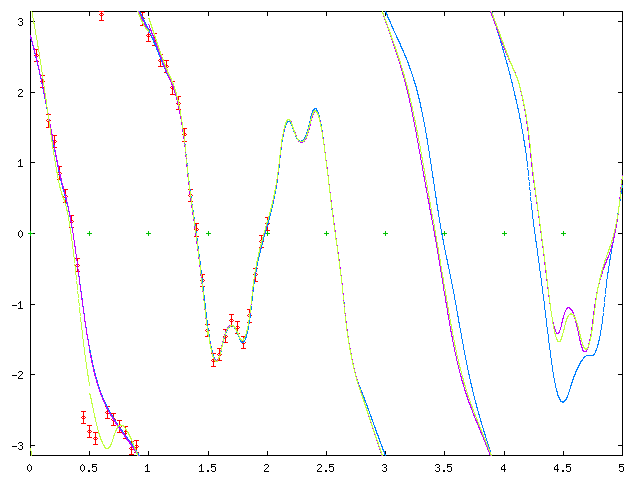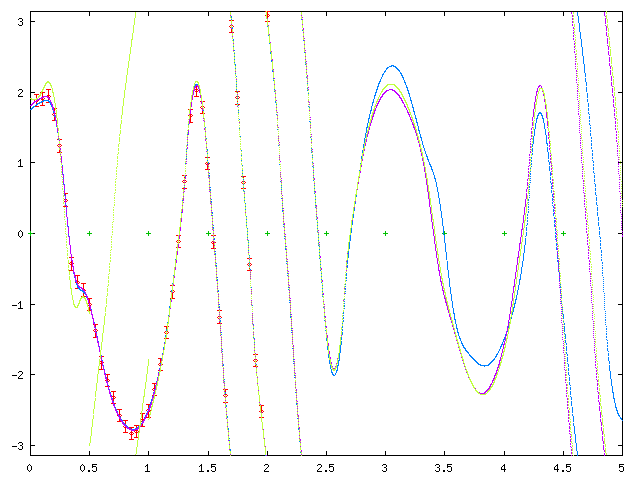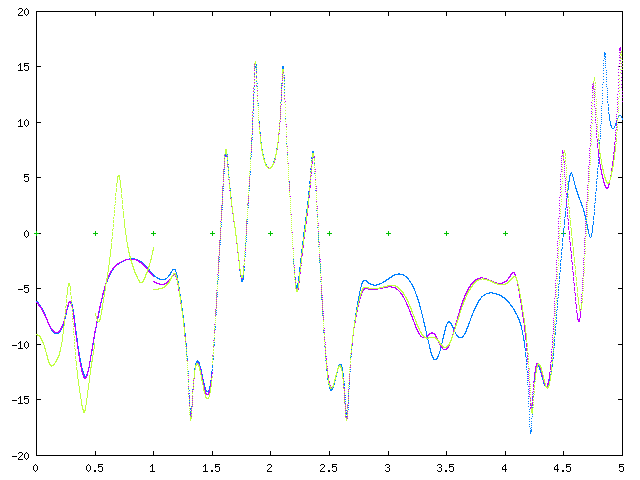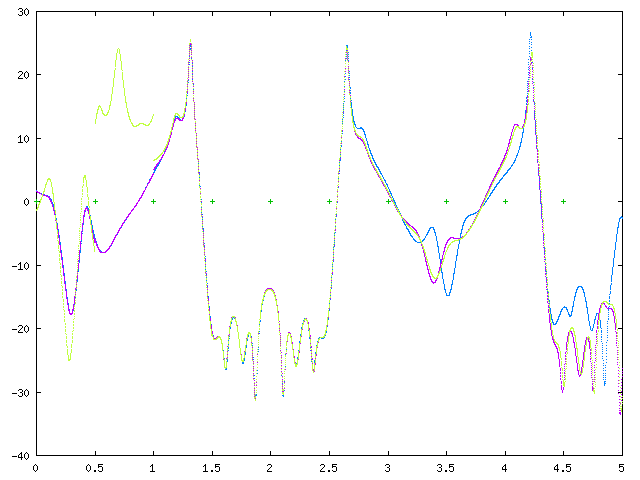Run 6 ('4d'-Var)
2 sec of observations (in 5 sec run). Observations are of both angles, but not their speeds. This is as run 3, but some observations have been moved well away from the exact solution. Unlike in run 5, this has NOT been taken into account by the size of their errors, and so the assimilation scheme thinks they are accurate observations.Graph A: Primary angle of double pendulum vs time
Key:Green points mark the assimilation cycle boundaries.
Blue is the exact solution.
Red are the observations used.
Magenta is the assimilated solution using the set of observations from run 3.
Light green is the assimilated solution using the modified set of observations.

Graph B: Secondary angle of double pendulum vs time
Key:Green points mark the assimilation cycle boundaries.
Blue is the exact solution.
Red are the observations used.
Magenta is the assimilated solution using the set of observations from run 3.
Light green is the assimilated solution using the modified set of observations.

Graph C: Rate of change of primary angle of double pendulum vs time
Key:Green points mark the assimilation cycle boundaries.
Blue is the exact solution.
Magenta is the assimilated solution using the set of observations from run 3.
Light green is the assimilated solution using the modified set of observations.

Graph D: Rate of change of secondary angle of double pendulum vs time
Key:Green points mark the assimilation cycle boundaries.
Blue is the exact solution.
Magenta is the assimilated solution using the set of observations from run 3.
Light green is the assimilated solution using the modified set of observations.

RETURN TO INDEX PAGE